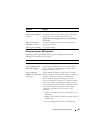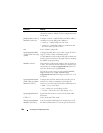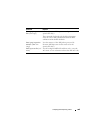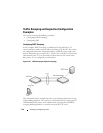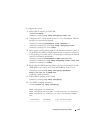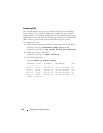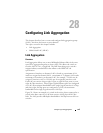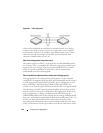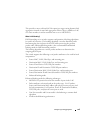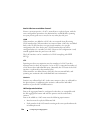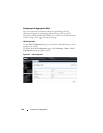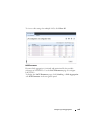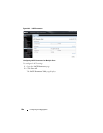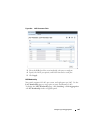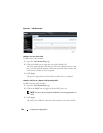
Configuring Link Aggregation 915
This provides a more resilient LAG. Best practices suggest using dynamic link
aggregation instead of static link aggregation.When a port is added to a LAG
as a static member, it neither transmits nor receives LACP PDUs.
What is LAG Hashing?
Dell Networking series switches support configuration of hashing algorithms
for each LAG interface. The hashing algorithm is used to distribute traffic
load among the physical ports of the LAG while preserving the per-flow
packet order. Enhanced hashing mode is the recommended and default
hashing mode for Dell Networking switches.
The hashing algorithm uses various packet attributes to determine the
outgoing physical port.
The switch supports the following set of packet attributes to be used for hash
computation:
• Source MAC, VLAN, EtherType, and incoming port.
• Destination MAC, VLAN, EtherType, and incoming port.
• Source IP and Source TCP/UDP port numbers.
• Destination IP and Destination TCP/UDP port numbers.
• Source/Destination MAC, VLAN, EtherType, and incoming port.
• Source/Destination IP and Source/Destination TCP/UDP port numbers.
• Enhanced hashing mode
Enhanced hashing mode has following advantages:
• MODULO-N operation based on the number of ports in the LAG.
• Packet attributes selection based on the packet type. For L2 packets,
Source and Destination MAC address plus physical source port are used
for hash computation. For IP packets, Source IP, Destination IP address,
TCP/UDP ports, and physical source port are used.
• Non-Unicast traffic and Unicast traffic is hashed using a common hash
algorithm.
• Excellent load balancing performance.



